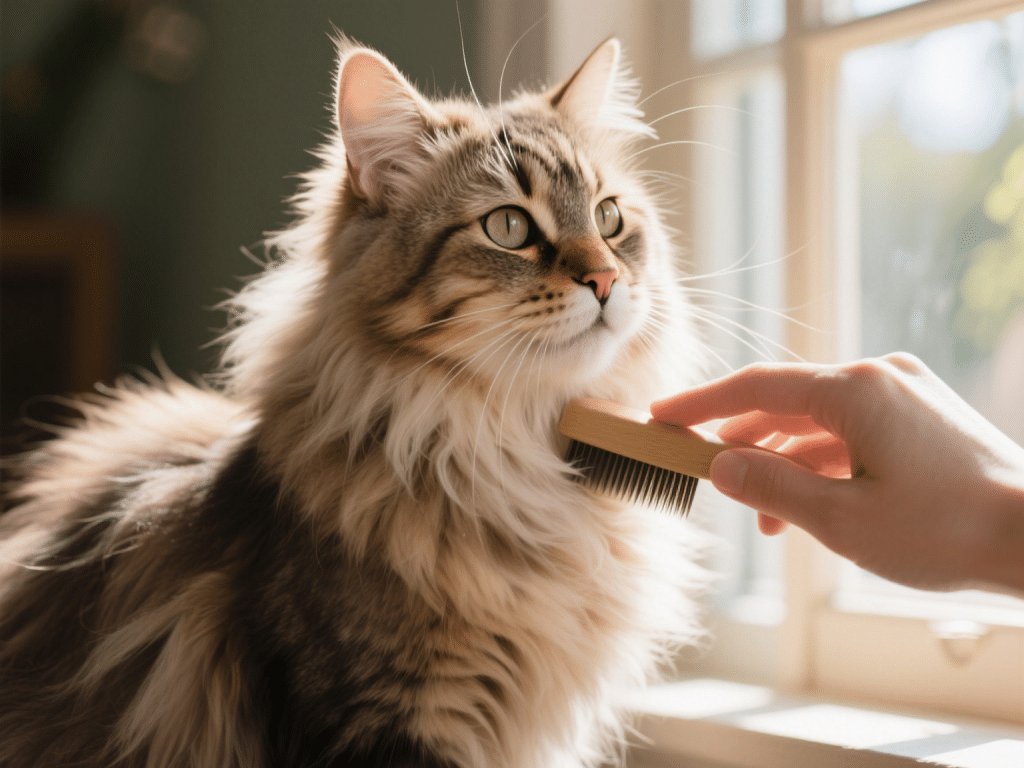Gentle Grooming Essentials: Keeping Your Cat’s Coat Healthy and Shiny

As a professional feline groomer and veterinary nurse for over a decade, I’ve learned that regular, gentle grooming isn’t just about aesthetics—it’s vital for your cat’s comfort, skin health, and bond with you. Whether your cat sports a sleek short coat or a luxurious mane, these evidence‑based techniques will help you establish a grooming routine that reduces shedding, prevents matting, and keeps your cat purring.
Why Grooming Matters
Skin & Coat Health: Brushing distributes natural oils, preventing dry patches and dull fur.
Shedding Control: Regular removal of loose hairs minimizes hairballs and fur on your furniture.
Early Detection: While grooming, you can spot lumps, bumps, parasites, or skin irritation early.
Strengthening Bond: Calm, positive sessions build trust and reduce anxiety around handling.
Tools of the Trade
Slicker Brush: Ideal for medium to long coats; removes tangles and undercoat hairs.
Rubber Grooming Mitt: Great for short‑haired cats; massaging action stimulates circulation.
Wide‑Toothed Comb: Gentle on sensitive areas; detangles mats without pulling.
Dematting Tool: Use sparingly on stubborn knots; always work from the edge inward.
Building a Positive Routine
Start Young: Introduce brushing in kittenhood with soft strokes and treats.
Short Sessions: Aim for 2–5 minutes initially; gradually increase as your cat tolerates.
Reward-Based: Offer a favorite treat or gentle praise to reinforce calm behavior.
Safe Environment: Choose a quiet, well‑lit spot; avoid high surfaces until your cat is confident.
Tackling Mats and Tangles
Prevention First: Brush at least twice weekly for long-haired breeds.
Gentle Separation: Hold the base of a mat to minimize skin pulling; work small sections with a wide‑toothed comb.
Professional Help: For large, painful mats, consult a groomer or veterinarian to avoid injury.
Bathing Basics
Most cats groom themselves, but occasional baths can help with skin conditions or heavy soiling.
Use Cat‑Safe Shampoo: pH‑balanced and fragrance‑free.
Warm Water & Calm Demeanor: Keep water shallow and speak softly.
Thorough Rinse & Dry: Residual soap irritates skin; use a low‑heat dryer or soft towel.
Nail Trimming and Ear Cleaning
Nails: Trim outer tip only; avoid the quick. Make it a positive experience with treats.
Ears: Use a soft, damp cloth—never insert cotton swabs. Look for redness, wax buildup, or odor.
When to Seek Professional Grooming
If your cat shows extreme anxiety, aggressive behavior, or extensive matting, a professional groomer can provide sedation options and specialized equipment.
By incorporating these gentle, expert‑backed grooming practices into your routine, you’ll ensure a healthy coat, reduce hairballs, and deepen your bond—one soft stroke at a time.






Comments on "Gentle Grooming Essentials: Keeping Your Cat’s Coat Healthy and Shiny" :